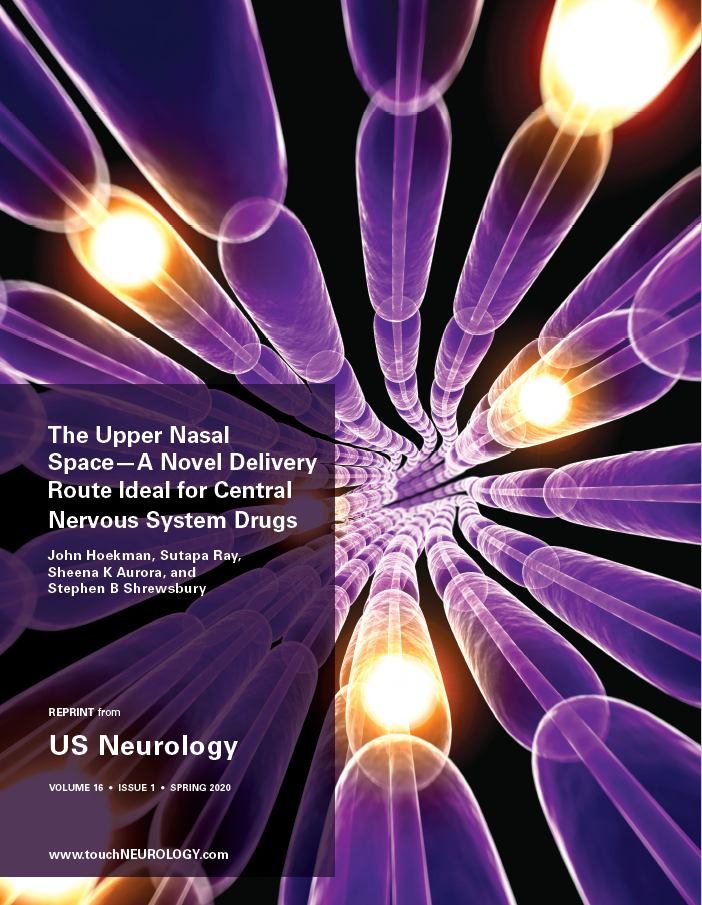The Upper Nasal Space—A Novel Delivery Route Ideal for Central Nervous System Drugs
posted in Publications by dharmendra.asimi@trndigital.com
John Hoekman, Sutapa Ray, Sheena K Aurora, and Stephen B Shrewsbury

Abstract:
Solid oral dosage forms account for up to 75% of prescriptions, but their effectiveness may be limited in some patients, and inappropriate for others. While injectable formulations may be an option for some central nervous system (CNS) disorders, injections are poorly accepted by most patients, except in an urgent or emergency situation. Thus, a need exists for non-oral dosage formulations as alternatives to treat conditions such as acute migraine, acute agitation or irritability, and OFF episodes in Parkinson’s disease, where oral forms are not optimal. Nasal drug delivery has been underutilized, provides a more rapid onset of activity, avoids gastrointestinal (GI) tract degradation and first-pass hepatic metabolism, achieves faster therapeutic plasma levels, may reduce GI adverse events, and provides patient convenience and ease-of-use. However, drug loss from the nose, which may lead to variability in absorption, has been one of several issues limiting use of nasal delivery. An innovative, non-oral drug/device delivery system that targets the upper nasal space is in late-stage clinical development for treating CNS disorders and its availability is expected to expand over the next few years, providing welcome additions for the treatment of CNS disorders in patients where oral dosage forms are not optimal.
How to cite this paper:
Hoekman, J., Ray, S., Aurora S.K. and Shrewsbury, S.B., The Upper Nasal Space—A Novel Delivery Route Ideal for Central Nervous System Drugs, US Neurology. 2020:16(1):25–31